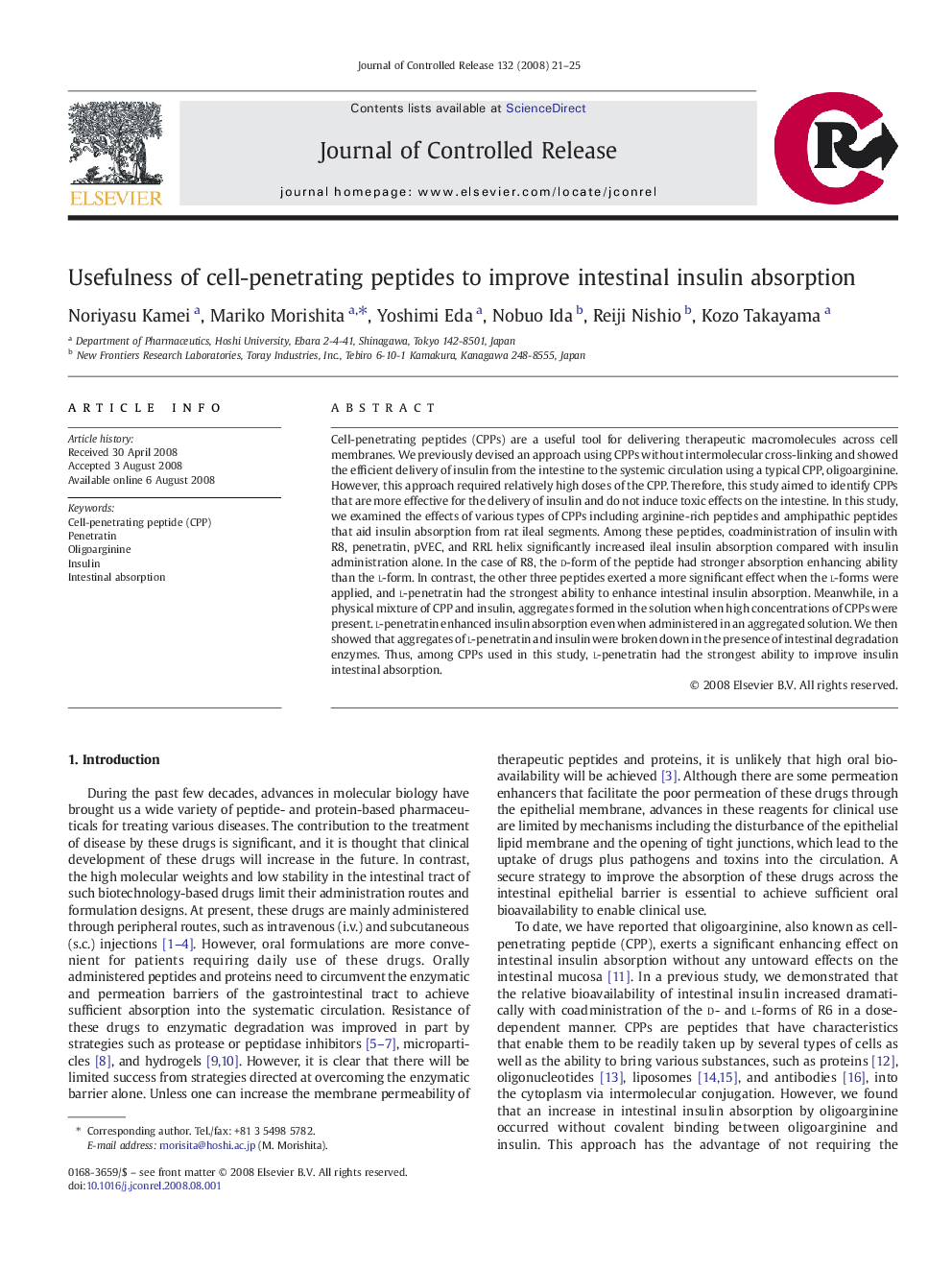| کد مقاله | کد نشریه | سال انتشار | مقاله انگلیسی | نسخه تمام متن |
|---|---|---|---|---|
| 1426342 | 986807 | 2008 | 5 صفحه PDF | دانلود رایگان |

Cell-penetrating peptides (CPPs) are a useful tool for delivering therapeutic macromolecules across cell membranes. We previously devised an approach using CPPs without intermolecular cross-linking and showed the efficient delivery of insulin from the intestine to the systemic circulation using a typical CPP, oligoarginine. However, this approach required relatively high doses of the CPP. Therefore, this study aimed to identify CPPs that are more effective for the delivery of insulin and do not induce toxic effects on the intestine. In this study, we examined the effects of various types of CPPs including arginine-rich peptides and amphipathic peptides that aid insulin absorption from rat ileal segments. Among these peptides, coadministration of insulin with R8, penetratin, pVEC, and RRL helix significantly increased ileal insulin absorption compared with insulin administration alone. In the case of R8, the d-form of the peptide had stronger absorption enhancing ability than the l-form. In contrast, the other three peptides exerted a more significant effect when the l-forms were applied, and l-penetratin had the strongest ability to enhance intestinal insulin absorption. Meanwhile, in a physical mixture of CPP and insulin, aggregates formed in the solution when high concentrations of CPPs were present. l-penetratin enhanced insulin absorption even when administered in an aggregated solution. We then showed that aggregates of l-penetratin and insulin were broken down in the presence of intestinal degradation enzymes. Thus, among CPPs used in this study, l-penetratin had the strongest ability to improve insulin intestinal absorption.
Journal: Journal of Controlled Release - Volume 132, Issue 1, 24 November 2008, Pages 21–25